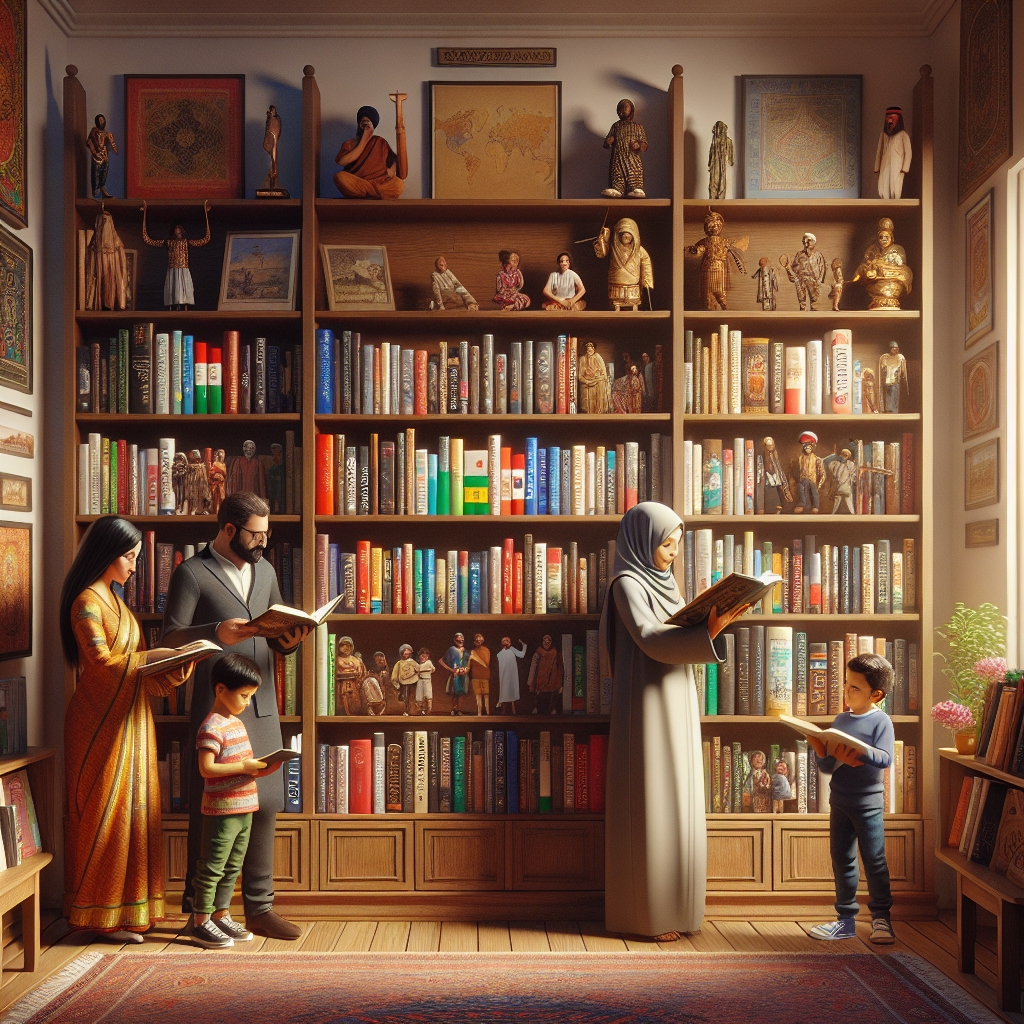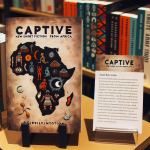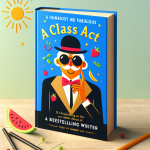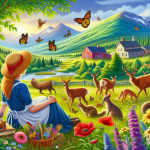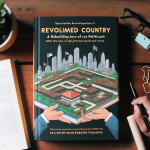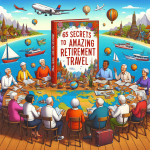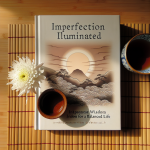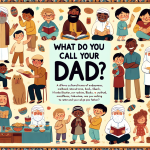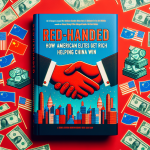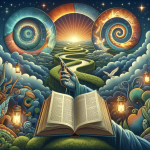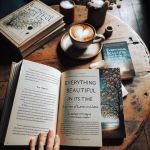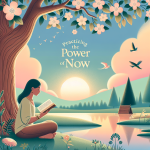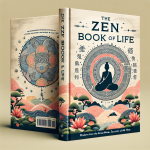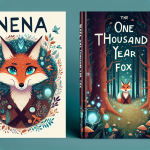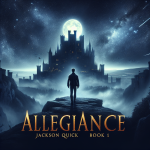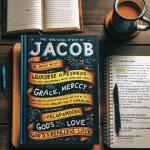As an Amazon Associate I earn from qualifying purchases.
Unlocking the World's Tapestry: 15 Essential Reads on Global Cultures
In an ever-interconnected world, understanding diverse cultures has never been more crucial. With technology bridging distant lands, people from various backgrounds interact more frequently, making cultural literacy essential. This curated list of 15 essential reads on global cultures offers an eye-opening journey into the vibrant essence of world traditions, histories, and societal norms. Each book serves as a gateway to a rich tapestry of human experience, encouraging readers to break free from their cultural confines and immerse themselves in the nuances of global societies.
These books not only entertain but also educate, shedding light on the complexities and beauty of cross-cultural landscapes. Through storytelling, memoirs, historical accounts, and analytical works, these reads address the growing need for cultural understanding by solving the problems of ignorance and cultural insensitivity. They offer invaluable insights into the lived experiences of people across continents, fostering empathy and a more profound appreciation for the richness of human diversity. Embrace these essential reads to enhance your global perspective and contribute to a more harmonious, culturally aware world.
The plot structures across the 15 Essential Reads on Global Cultures vary widely, reflecting the diverse storytelling traditions of different cultures. For instance, in “Things Fall Apart” by Chinua Achebe, the narrative delves into the impact of European colonization on African society through the life of Okonkwo. In contrast, “The Kite Runner” by Khaled Hosseini merges personal redemption with the political upheavals in Afghanistan. These plots bring to the forefront the complexities of societal changes, personal struggles, and cultural conflicts, creating a tapestry of interwoven stories that highlight both the commonalities and differences in global human experiences.
Characters in these essential reads often serve as cultural ambassadors, providing readers an intimate look into their worlds. “Interpreter of Maladies” by Jhumpa Lahiri presents characters grappling with the intricacies of Indian-American identity, while Marjane Satrapi’s “Persepolis” offers a deeply personal look at the author’s own experiences growing up in post-revolutionary Iran. These characters, defined by their unique cultural backgrounds and personal challenges, enable readers to empathize with unfamiliar perspectives and gain a deeper understanding of diverse lifestyles and societal norms.
The writing styles of these books are as varied as the cultures they represent. Chimamanda Ngozi Adichie’s “Half of a Yellow Sun” is characterized by lush, descriptive prose that paints a vivid picture of Nigeria during the Biafran War. Haruki Murakami’s “Norwegian Wood” uses a minimalist, introspective style to explore themes of love and loss in Japan. These stylistic differences not only reflect the authors' individual voices but also resonate with the cultural contexts they are portraying, thereby enhancing the reader's immersion into different worlds.
Settings in these essential reads play a crucial role in immersing readers in the stories’ cultural contexts. Gabriel García Márquez’s “One Hundred Years of Solitude” transports readers to the magical realist world of Macondo, a fictional town in Colombia. Isabel Allende’s “The House of the Spirits” places readers in Chile, weaving historical events with personal sagas. These rich and diverse settings are not mere backdrops but integral elements that shape narrative dynamics, influence characters' actions, and reflect the societal norms and values of different cultures.
The unique aspects of these global culture reads lie in their ability to bridge gaps between different worlds, offering readers insights into lives and histories far removed from their own. For example, “A Thousand Splendid Suns” by Khaled Hosseini explores the intersection of personal and political trauma in war-torn Afghanistan. “My Brilliant Friend” by Elena Ferrante, set in Italy, delves deeply into the complexities of a lifelong friendship against the backdrop of societal change. These books not only entertain but also educate, fostering an appreciation for the rich tapestry of global cultures and the universal human experiences that bind us all.
Books on global cultures provide a window into the diverse customs, traditions, and social mores that shape the human experience worldwide. “Wild Swans” by Jung Chang, for instance, offers a multigenerational look at the transformations in 20th-century China through the lens of one family's experiences. Similarly, “The God of Small Things” by Arundhati Roy explores the intricate caste system and family dynamics in India. These narratives enrich readers' understanding of different cultural contexts and challenge conventional perceptions, providing a broader, more inclusive view of the world.
Cultural books often focus on the intersection of personal identity and societal expectations, offering nuanced perspectives on how individuals navigate their cultural landscapes. “Americanah” by Chimamanda Ngozi Adichie discusses the complexities of African identity in contemporary America, while “Cry, the Beloved Country” by Alan Paton examines racial tensions and reconciliation in South Africa. Through these poignant and thought-provoking narratives, readers gain a deeper appreciation for the unique and shared cultural experiences that define human societies.
Books exploring world cultures often illuminate the historical events and social dynamics that shape contemporary societies. For example, “The Shadow of the Wind” by Carlos Ruiz Zafón captures the post-Spanish Civil War atmosphere in Barcelona, while “Brick Lane” by Monica Ali portrays the immigrant experience in London's East End. These narratives provide readers with a contextual understanding of different cultural and historical backgrounds, fostering empathy and a broader worldview.
Enhancing cultural understanding is a key objective of many global culture reads. Through the lens of personal stories, these books address broader issues such as migration, diaspora, and cultural assimilation. In “White Teeth” by Zadie Smith, the intergenerational struggles of two immigrant families in London reveal the complexities of identity and cultural integration. Similarly, “The Namesake” by Jhumpa Lahiri explores the friction between maintaining cultural heritage and embracing a new identity. These stories deepen readers' awareness of the nuanced challenges and enriching experiences that come with navigating multiple cultural identities.
Cross-cultural reads often highlight the rich intersections and exchanges that occur when cultures meet. “Memoirs of a Geisha” by Arthur Golden offers a glimpse into the hidden world of Japanese geishas, while “The Joy Luck Club” by Amy Tan intertwines the stories of Chinese-American daughters and their immigrant mothers. These narratives showcase the complexity and beauty of cultural hybridity, celebrating the diverse ways in which cultures can influence and enrich each other.
Examples and case studies in global culture books offer concrete insights into how cultural dynamics play out in real-world scenarios. “The Spirit Catches You and You Fall Down” by Anne Fadiman explores the tragic consequences of cultural misunderstanding in a Hmong family's healthcare experience in the U.S. In “In the Time of the Butterflies” by Julia Alvarez, the story of the Mirabal sisters offers a real-life case study of political resistance against the Trujillo dictatorship in the Dominican Republic. These examples demonstrate the significant impact of cultural factors on individuals' lives and societal outcomes, underscoring the importance of cultural awareness and sensitivity.
Global Cultures
Global cultures provide a rich tapestry of traditions, languages, and customs that diversify user experience. Engaging with different cultures can foster empathy and a greater understanding of human diversity. Users are exposed to varied perspectives, which can enhance creativity and critical thinking. However, the vast differences in cultural norms can sometimes cause misunderstandings and conflicts, as one culture's norm may be considered offensive in another. Navigating these differences requires sensitivity and awareness.
Cultural Books
Reading cultural books allows users to immerse themselves in other worlds and viewpoints, enriching their knowledge and expanding their horizons. These books can serve as a bridge to understanding complex cultural narratives, making them accessible to a broader audience. However, the availability of quality translations can be a limiting factor, potentially distorting the original message. Additionally, users may struggle with interpretation when cultural references are too deeply embedded in specific contexts.
World Cultures
Exploring world cultures offers an extensive range of experiences, from cuisine to fashion, enabling users to appreciate the limitless diversity of human societies. This exploration can significantly enhance intercultural awareness, promoting inclusiveness and reducing global ignorance. On the downside, the sheer volume of cultural variations can overwhelm users, making it difficult to absorb and retain valuable information. Moreover, superficial engagement with world cultures might lead to cultural appropriation rather than genuine appreciation.
Cultural Understanding
Gaining cultural understanding is crucial for effective communication and interaction in a globalized world. It helps in breaking down stereotypes and promotes mutual respect among different cultural communities. Enhanced cultural understanding can improve international business relations and foster peace. However, achieving deep cultural understanding requires time and effort, which can be a significant commitment for users. There’s also the risk of developing an overgeneralized or simplified view of other cultures, which can be counterproductive.
Cross-Cultural Reads
Cross-cultural reads are invaluable resources for users seeking to navigate and thrive in multicultural environments. They provide insights into the nuances and complexities of different cultures, enhancing cross-cultural competence. These reads can equip users with practical strategies for interacting with people from diverse backgrounds. However, the effectiveness of cross-cultural literature depends on the author’s depth of knowledge and authenticity. Poorly researched or stereotypical portrayals can misinform users and perpetuate incorrect assumptions.
FAQ on Global Cultures and Cross-Cultural Understanding
What is the importance of studying global cultures?
Studying global cultures helps promote understanding and respect among people from different backgrounds. It fosters empathy, reduces prejudices, and enhances social harmony by broadening one's perspectives and knowledge.
Can you recommend some books that provide insights into different cultures?
Absolutely! Some notable books include “Things Fall Apart” by Chinua Achebe for African culture, “One Hundred Years of Solitude” by Gabriel García Márquez for Latin American culture, and “Kafka on the Shore” by Haruki Murakami for Japanese culture. These books offer a deep dive into the societal norms, traditions, and everyday life of these regions.
What are the benefits of cross-cultural reads?
Cross-cultural reads allow individuals to gain a broader understanding of the world, appreciating the diversity and complexity of human experiences. They can improve one's cultural sensitivity, communication skills, and even inspire travel or new learning endeavors.
How can reading about other cultures enhance cultural understanding?
Reading about other cultures provides context to different ways of life, belief systems, and customs. It helps break down stereotypes and equips readers with the knowledge to navigate cultural differences more effectively in real-life interactions.
Are there any specific genres of books that are particularly good for learning about global cultures?
Yes, genres such as historical fiction, memoirs, biographies, and travel literature are excellent for learning about global cultures. These genres often depict cultural settings authentically and offer personal accounts that bring cultural nuances to life.
What resources are available for someone looking to expand their knowledge of world cultures?
In addition to books, there are numerous resources such as cultural websites, documentary films, cultural exchange programs, online courses, and cultural festivals. Platforms like Coursera and edX offer courses focused on global cultures which can be very enriching.
How can I choose a book that accurately represents a particular culture?
Look for books by authors who are native to the culture being depicted, as they are more likely to offer authentic insights. Checking reviews and recommendations from cultural experts or readers from that culture can also guide you to accurate representations.
What are some classic books that are considered essential reading for understanding world cultures?
Classics such as “To Kill a Mockingbird” by Harper Lee (American South), “The Tale of Genji” by Murasaki Shikibu (Japanese), and “The Alchemist” by Paulo Coelho (Latin American/Global) are considered must-reads for their rich cultural contexts and timeless themes.
How do I approach books about cultures that are very different from my own?
Approach with an open mind and a willingness to learn. Avoid preconceived notions, and be prepared to encounter, and accept, differences. Remember, the goal is to understand and appreciate, not to judge.
Can children benefit from reading cross-cultural books?
Absolutely! Cross-cultural books can teach children about diversity, inclusion, and empathy from a young age. They help children appreciate different ways of life and understand that the world is a rich tapestry of varied traditions and perspectives.
What impact can cross-cultural understanding have in a professional setting?
In a professional setting, cross-cultural understanding can lead to better teamwork, communication, and collaboration among diverse workforces. It can enhance global business strategies, improve customer relations, and foster a more inclusive workplace environment.
Drawing this extensive journey through “15 Essential Reads on Global Cultures” to a close, it's evident that delving into these thoughtfully curated selections opens a treasure trove of cultural wisdom, fostering a deeper understanding and appreciation of the world’s rich cultural tapestry. These books transcend mere stories; they are portals into the diverse ways of living, thinking, and embracing the beautiful complexities that define human societies across the globe.
The significance of cultural books in today’s interconnected world cannot be overstated. They serve as vital bridges, closing gaps between communities, and illuminating the nuances of traditions, beliefs, and customs. Each book on this list provides unique insights, from the intricacies of everyday life in distant lands to the profound philosophical underpinnings that shape entire cultures. By exploring these narratives, readers gain an enriched perspective that transcends the superficial, allowing for genuine cross-cultural empathy and understanding.
Moreover, the benefit of immersing oneself in such diverse cultural experiences is manifold. Firstly, it cultivates global awareness and respect, fostering an inclusive mindset crucial for navigating today's multicultural environments. Secondly, these readings spark curiosity and intellectual curiosity, encouraging readers to question their preconceptions and embrace novel viewpoints. This intellectual expansion is not only personally fulfilling but also professionally advantageous in an increasingly globalized job market.
The books highlighted in this list also underscore the universal themes that connect us all, irrespective of geographical boundaries. Love, hope, struggle, and joy are experiences shared across cultures, and understanding how these emotions are expressed and valued globally enhances our collective human experience. Such an exploration enriches our cultural literacy, which is indispensable in cultivating a more harmonious global community.
In conclusion, “15 Essential Reads on Global Cultures” is more than just a reading list; it’s a gateway to a world of shared human experience and cultural richness. Each book offers a chance to step into different shoes, see through different eyes, and understand the myriad ways in which people experience and interpret life. Embracing these books means embracing a commitment to lifelong learning, empathy, and a celebration of diversity. Whether you are an avid reader, a cultural enthusiast, or someone keen to broaden your horizons, these books present a valuable and enlightening choice, and stand as quintessential reads for anyone devoted to the pursuit of cross-cultural comprehension and global unity.
Amazon and the Amazon logo are trademarks of Amazon.com, Inc, or its affiliates.

